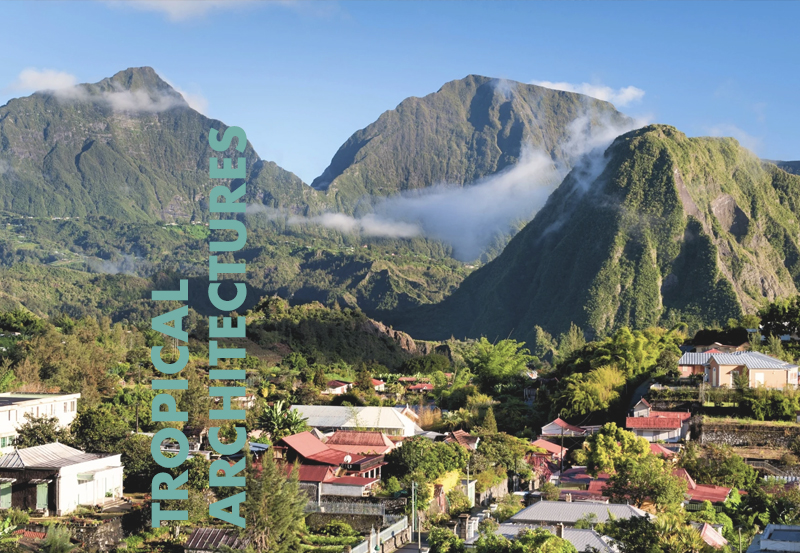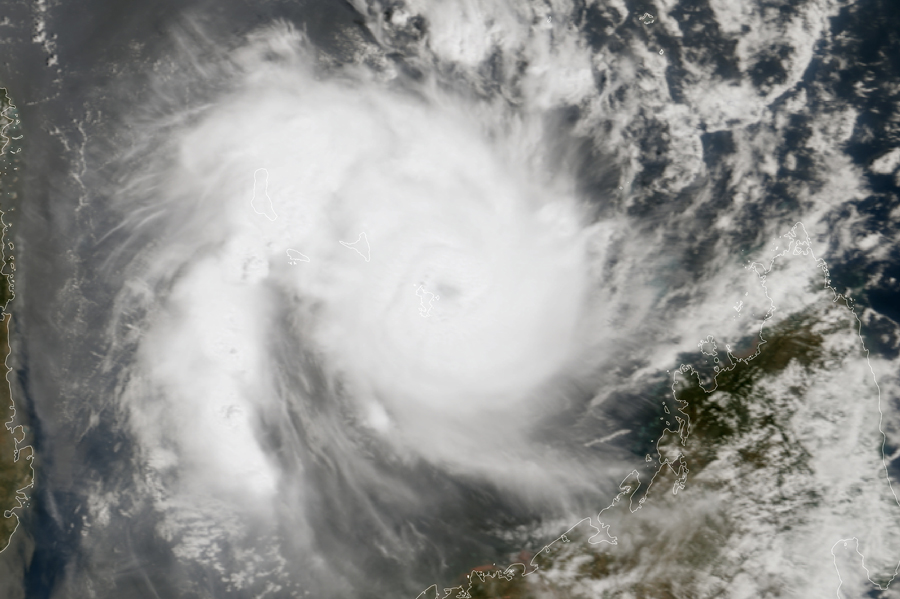La Réunion: an architecture school in the tropics
A branch of Montpellier’s École nationale supérieure d’architecture (ENSA) since 1988, La Réunion’s school of architecture, based in the town of Le Port, became France’s 21st ENSA on 1 February 2025. While pursuing its commitment to designing for the tropical climate, the school is also developing a new research centre dedicated to this specific environmental issue. To mark this change in status, Pierre Rosier, Director of ENSA de La Réunion, talks to AA about the school’s ambitions, including the event it has been organising since 2018: the Tropical Architecture Biennial, which held its third edition in November 2024.
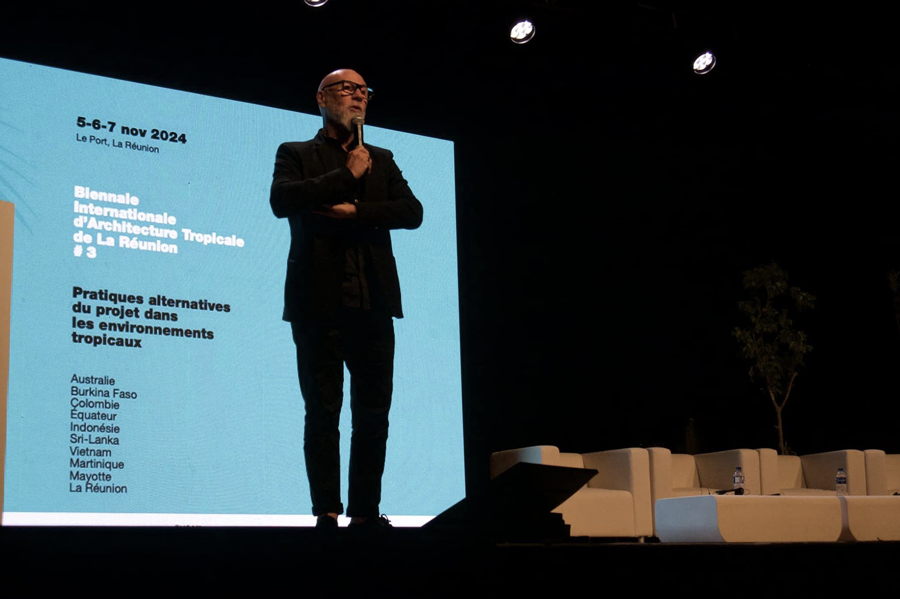
‘A’A’: What is the background to the new status of the Réunion School of Architecture?
Pierre Rosier: Founded in 1988, the Réunion School of Architecture was, until 31 January, a branch of the National School of Architecture in Montpellier: we were administratively dependent on it, but had our own funding and grants. I was involved in its creation, I taught there and I have been its director for 15 years. On 1 February 2025, a decree was issued announcing the creation of the École nationale supérieure d’architecture de La Réunion. This change in status, which I have been promoting for the last ten years, will enable the school to be better identified and taken into account as a benchmark institution for architecture in the tropics.
What are the specific approaches adopted by the school?
The school specialises in the study of architecture, cities and territories in tropical zones, with a particular focus on bioclimatic design. 60% of our Masters students come from mainland France to study in this particular field, but we also welcome students from Belgium, Germany, Croatia, the West Indies, Polynesia, Canada, Brazil, etc. In order to open up our school to the international community, 30% of our studios and Masters seminars are taught in English. We’re determined to do this because we started from a simple observation: La Réunion is a tiny territory that nobody really notices. So, in order to ‘exist’, we had to develop a certain expertise. We teach our students to work with the tropical climate, the population – in short, with everything that shapes a territory in terms of formal, cultural or societal criteria. We also teach them to emphasise the use of bio-sourced or geo-sourced materials, so that they can work as independently as possible – given the remote location of La Réunion, architects sometimes have to deal with supply problems linked to the vagaries of bad weather, strikes or, more recently, a pandemic. Many of our students’ projects use local woods for the finishing work, or pozzolan, a resource that is naturally available on the island, but also, of course, bamboo: the structure of the pavilion that our students built as part of the ArchiFolies project for the Olympic Games used this very material.
With this change in status, what developments can be expected?
At the end of last year we set up a research group, called GREAT (Groupe de recherche sur les environnements architecturaux tropicaux, or Research Group on Tropical Architectural Environments), which includes around fifteen teacher-researchers and is associated with four laboratories: Piment and Espace-Dev, at the University of La Réunion, Passages, at the Bordeaux School of Architecture and Landscape, and the Griffith University laboratory in Australia. We’re a small team of around fifty teachers and staff, with 200 students at present, but we’re preparing to welcome up to 300 students, since the school will be moving into new premises designed by Reunionese architect Olivier Brabant at the end of 2027, right opposite the current school [built in 2002 in the town of Le Port by Architecturestudio and Jean-François Delcourt, Ed.]. We invested a great deal of time and effort in this project, which we felt was essential to preserve the spirit of the project from start to finish in the face of any arbitrations and changes of a financial, technical or other nature. This enabled us to maintain high standards in terms of programming, with a very high architectural level, using recycled materials, a bioclimatic design with no air-conditioning, etc. It’s a building that will serve as a demonstrator, both in terms of its envelope and its teaching. Above all, instead of thinking in terms of student numbers, we have thought in terms of use: by pooling the use of square metres dedicated to several activities that do not overlap in time, we will be working in spaces that are reversible, transferable and flexible – and therefore on smaller surfaces. The premises we currently occupy, which we share with the Réunion School of Art, will be entirely taken over by the latter – with the exception of certain spaces, which will remain dedicated to research and to the archives of our ENSA.
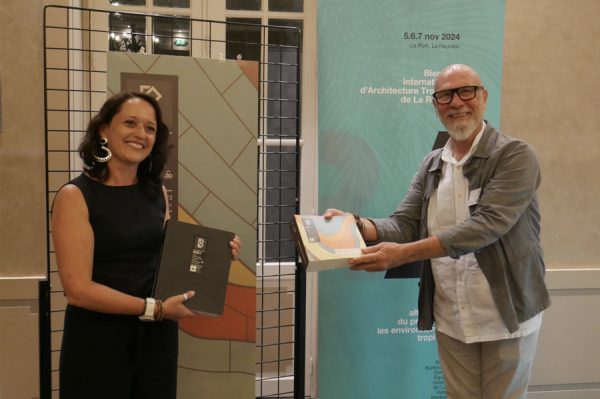
Can you tell us about the Tropical Architecture Biennial?
In 2016, the school opened up to Masters programmes, leading to the first graduates being appointed in 2018. To highlight this progress, between 2018 and 2019 we thought about a way to showcase the research and projects supported by our students by organising an international colloquium. It was so successful that we decided to make it a biennial event to publicise the architectural, landscape and urban productions produced in tropical environments. The subject of the first edition, in 2019, was ‘Architecture in tropical environments: building the landscape. Between practice and research’, followed in 2022 by ‘Supporting the climate transition in tropical spaces: innovative architectural, urban planning and landscape practices’. The third edition, held last October, focused on ‘Alternative project practices in tropical environments’. We feel it is important to show that research is not exclusive to universities, that it also lies at the very heart of architects’ work. This is why we have decided to situate the biennial between research, as in 2022, and practice, as in 2024. To organise the biennial, we have set up a scientific committee, made up of researchers from La Réunion and elsewhere, and a steering committee, which includes institutional players and our financial partners. In 2024, the scientific committee came together and proposed a series of international architects involved in alternative practices and working in tropical environments. As regards the chairmanship, we wanted it to be given to an external representative, alternating between the continents. The first edition was chaired by Dominique Gauzin-Müller, for Europe; the second by Vincent Kitio, architect and representative of UN-Habitat in Kenya; the third by Maria Samaniego, architect and president of DOCOMOMO for Ecuador and organiser of the Pan-American Architecture Biennial in Quito.
The 2024 edition of the Biennial of Tropical Architecture welcomed Maria Samaniego, Honorary President of the Biennial, President of the College of Architects of Ecuador-Pichincha and President of the Pan-American Federation of Architects’ Associations (Ecuador), Marie-Christine Ponamalé, President of Outre-Mers 360° and keynote speaker (mainland France) and Philippe Madec, architect and guest of honour (mainland France). Also present were Ericka Bareigts, Mayor of Saint-Denis (Reunion Island), Vanessa Miranville, Mayor of La Possession (Reunion Island) and Olivier Hoareau, Mayor of Le Port (Reunion Island).
Several speakers were invited to present their work and discuss their different architectural approaches: Realrich Sjarief (Indonesia), Anne-Laure Cervigneaux (Australia), Hoàng Thúc Hào (Vietnam), Opus Studio (Colombia), Narein Perera (Sri Lanka), Javier Mera (Ecuador), Léandre Guigma (Burkina Faso), Kevin O’Brien (Australia), Sébastien Clément (La Réunion), Michel Reynaud (La Réunion), Nicolas Peyrebonne (Mayotte) and David Fontcuberta (Martinique).
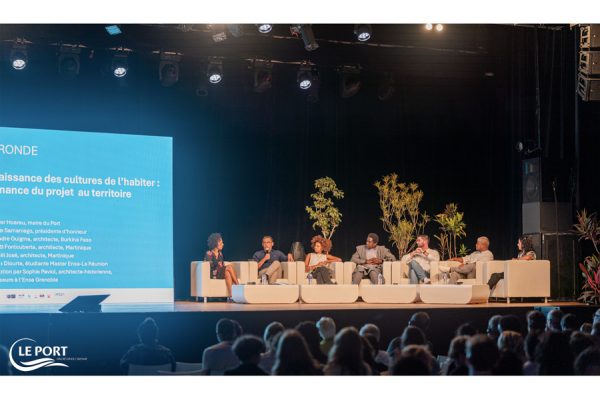
Who attends these biennials?
Last year’s event attracted 250 visitors every day: local authority staff, architects, town planners, landscape architects, engineers, elected representatives, etc. Our students are always involved in the event: undergraduates help with the organisation and logistics, while masters students, whose attendance is compulsory, take part in the discussion panels by speaking, asking questions and so on. One of our students actually went to Indonesia for an internship after meeting Realrich Sjarief, one of the speakers at last year’s event, who left a lasting impression for the finesse of his work and the highly sensitive approach he adopted. The next edition, to be held in November 2026, is still in the planning stages, but we’re looking at the possibility of opening it up to the general public, whereas previous editions were aimed at professionals or an informed public.
As well as passing on the message to students, this biennial event sends out a strong message to the various players involved in architecture in tropical environments.
Absolutely. The outcome of this year’s event was very positive for all the participants, whether they were communicators or spectators. What we’re sending out is a message about the urgent need to think and design tropical architecture differently. We need to rethink the situation, find alternative ways of building and living, and that means raising awareness among the various links in the architectural chain. This raises questions about public commissioning, the mentality of elected representatives, the skills of companies and the supply of materials.
I also feel that this biennial event underlines the importance of teaching not just on the scale of the island, but on the wider scale of countries with tropical climates. When we welcome participants to the Biennial, we realise that we, as residents of these tropical countries, have a real head start when it comes to mastering certain subjects, such as natural ventilation, solar protection, heat management and so on. And in doing so, we are demonstrating that our island can develop specific skills and constitute a real laboratory for tropical architecture: La Réunion is more than just sand and palm trees. Our event is undoubtedly one of the very few to think ‘horizontally’, focusing not just on the know-how of a given territory, but on knowledge specific to all tropical countries. And that’s how our weakness becomes our strength: we may be a tiny confetti lost in the Indian Ocean, but we still have a lot to say! When we set up the Biennial, our aim was to encourage exchanges across the tropical zone: to brainstorm, exchange ideas and design based on the informed study of a number of examples, studying what is being done in Australia, Africa and South America, what can and cannot be transposed from one environment to another, and so on. With this event, we are both demonstrators and promoters.
The conference proceedings for the 2019 and 2022 editions of the Tropical Architecture Biennial are available (in French) via the links above or on the ENSA de La Réunion website.

